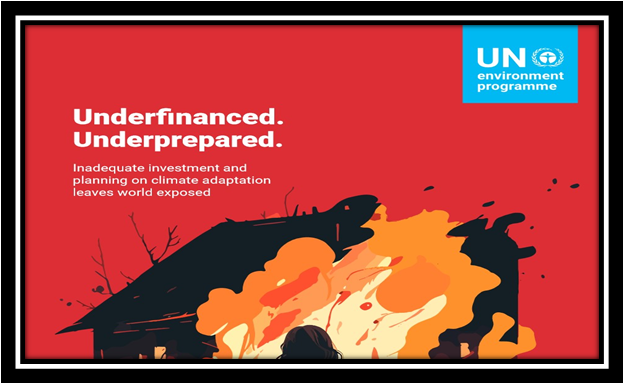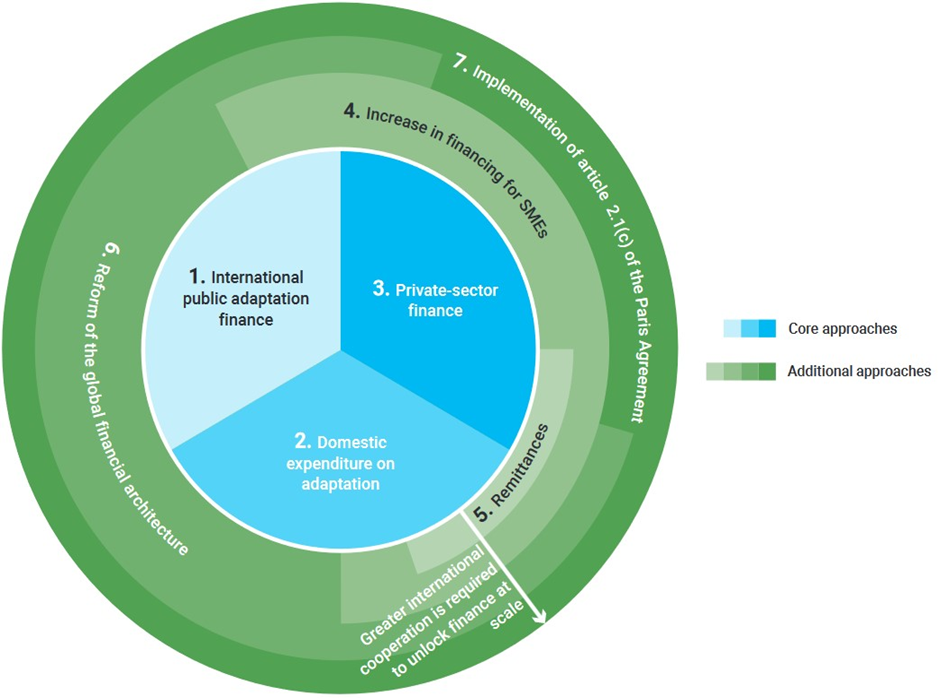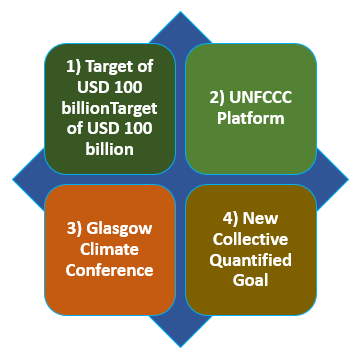- Courses
- GS Full Course 1 Year
- GS Full Course 2 Year
- GS Full Course 3 Year
- GS Full Course Till Selection
- Online Program
- GS Recorded Course
- NCERT (Recorded 500+ Hours)
- Polity Recorded Course
- Geography Recorded Course
- Economy Recorded Course
- AMAC Recorded Course
- Modern India, Post Independence & World History
- Environment Recoded Course
- Governance Recoded Course
- Science & Tech. Recoded Course
- International Relations and Internal Security Recorded Course
- Disaster Management Module Course
- Ethics Recoded Course
- Essay Recoded Course
- Current Affairs Recoded Course
- CSAT
- 5 LAYERED ARJUNA Mentorship
- Public Administration Optional
- ABOUT US
- OUR TOPPERS
- TEST SERIES
- FREE STUDY MATERIAL
- VIDEOS
- CONTACT US
Adaptation Gap Report 2023
Adaptation Gap Report 2023

Context
In November, 2023 Adaptation Gap Report 2023 released by the United Nations Environment Programme (UNEP).

|
Highlights |
Recommendations |
|
|
|
|
|
|
|
|
|
|
Seven Ways to Bridge the Adaptation Finance Gap

Climate Financing Concerns for Developing Countries
- Limited Capacity of Developing Countries: Adaptation is vital for saving lives, livelihoods, and ecosystems, particularly in developing and vulnerable countries with limited resilience, as there is no immediate solution to halt the ongoing effects of climate change. These adaptation measures require adequate climate financing.
- Feasibility of Adaptation Measures by Developing Countries: Countries take various adaptation measures based on their specific needs which include reinforcing coastlines, constructing seawalls in island nations, experimenting with heat-resistant crops, building climate-resilient infrastructure, securing water sources, and similar efforts to help local populations better cope with rising temperatures and their consequences.
- But these adaptive measures impose financial obligations beyond the budgetary reach of governments.
- Lack of Proactiveness on Part of Developed Countries: Developed countries, as per international climate agreements, are obligated to offer financial support and technology to assist developing countries in adapting to climate change.
- Developed countries have failed to channelise requisite funds despite various conventions and treaties.
Efforts Being Made by the Developed Countries

-
Developed countries had promised, way back in 2009, to mobilize at least USD 100 billion in climate finance every year from 2020 but even three years after the deadline, that amount has not been realized.
-
Efforts are being made to increase the finance flows, not just for adaptation, but for all other kinds of climate needs, together called climate finance through United Nations Framework Convention on Climate Change (UNFCCC).
-
But the need for climate finance has skyrocketed and is now assessed to be in trillions of dollars every year.
-
At the Glasgow climate conference in 2021, the developed countries had committed themselves to double the money for adaptation.
-
The doubling of adaptation finance by 2025 and the new collective quantified goal for 2030 that is under deliberation will be instrumental in helping to close the climate finance gap with the help of developing countries.
Way Forward
-
This report identifies seven ways to increase financing, including through domestic expenditure and international and private sector finance.
-
Additional avenues include remittances, increasing and tailoring finance to Small and Medium Enterprises and a reform of the global financial architecture.
-
The new Loss and Damage fund will also need to move towards more innovative financing mechanisms to reach the necessary scale of investment.



